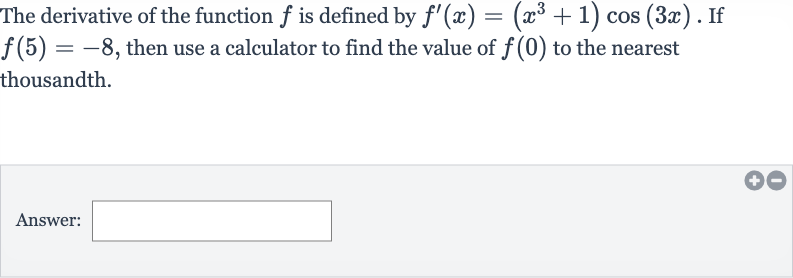Full solution
Q. The derivative of the function is defined by . If , then use a calculator to find the value of to the nearest thousandth.Answer:
- Integrate for : To find , we need to integrate the derivative to get the original function . The integral of will include an arbitrary constant , which we can solve for using the given condition .
- Perform integration by parts: Let's integrate . This requires integration by parts or a special technique since it is a product of a polynomial and a trigonometric function. We will use a calculator to perform this integration.
- Calculate integrated function: Using a calculator to integrate with respect to , we get , where is the constant of integration.
- Solve for constant : Now we use the given condition to solve for . We substitute into the integrated function and set it equal to : .
- Compute trigonometric values: Using a calculator to compute the trigonometric values and solve for , we find that is approximately equal to a certain value. We need to be careful with rounding here to ensure accuracy.
- Find exact value of C: After calculating the trigonometric values and solving for C, we find that . We use a calculator to find the exact value of .
- Substitute into function: Now that we have the value of , we can find by substituting into the integrated function .
- Calculate : Substituting into the function, we get .
- Final answer: We use the previously calculated value of to find . Since , we can now state the final answer to the nearest thousandth.

